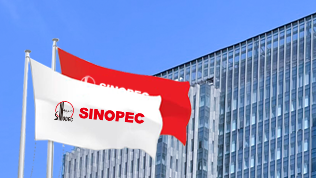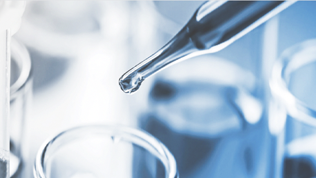- Home
- About Us
- News
- Operations
- Products & Services
-
Social Responsibility

- Clean energy ensures
safe supply - Advancing the building of a Beautiful China
with a better environment - Creditable cooperation
for deepening mutual benefits - Pursuing a better life
for people - Driving common prosperity
through openness and sincerity - Leading sustainable development
through lean management

- Clean energy ensures
- Innovation

Green & Low-carbon Development
In 2019, the Company thoroughly studied and implemented the thoughts of building ecological civilization proposed by President Xi Jinping, and focused on advancing pollution prevention and treatment and the protection of the Yangtze River. Guided by the concept of green development, the Company redoubled efforts to promote the Green Enterprise Campaign and ecological and environmental protection. With energy conservation prioritized, more focuses were put on improving energy efficiency and bettering resource utilization as well as other key tasks. The Company was awarded the titles of China's Low-Carbon Model, Leader of Ecological Environment, Environmental Social Responsibility Enterprise of the Year 2019 and Outstanding Contributor to Energy Conservation and Emission Reduction.
Energy Management
The energy and water saving targets were fully met. The Company's comprehensive energy consumption per 10,000 yuan of output is 0.521 tonne of standard coal (calculated at the comparable prices in 2010), down by 1.11%, saving 1.056 million tonnes of standard coal of energy; industrial water usage decreased by 1.1%, all hitting annual targets.
The “Energy Efficiency Doubling” plan was steadily promoted. The Company promoted the key energy-saving projects such as injection-production-transmission integrated energy efficiency doubling project and energy system optimization project. 468 projects under the plan were implemented, achieving an annual energy saving of 537,000 tonnes of standard coal.
The energy structure was continuously adjusted. The Company promoted the adjustment of energy structure, advanced the work of replacing oil with electricity in the processes of injection, mesh drilling, and workover. Wider application of electric rigs achieved obvious energy saving effects. The introduction of medium and low pressure steam and hydrogen from surrounding industrial parks and enterprises optimized regional resource utilization. Effective use of geothermal and solar energy enlarged the share of clean energy in the energy consumption. The company built distributed photovoltaic power stations with a total installed capacity of 206.25 MW and a total power output of 220 million kWh/year, replacing traditional energy of 60,000 tonnes of standard coal. Moreover, the Company promoted geothermal heating projects which cover an area of over 50 million m2 and replace traditional energy of 1.44 million tonnes of standard coal per year.
Energy efficiency “leaders” campaign was carried out. In the benchmark activity of energy efficiency “leaders” campaign in the petroleum and chemical industry, Qingdao Refining Corp. and Guangzhou Company were rated as energy efficiency “leaders” of the refining business. Maoming Company and Zhenhai Refining and Chemical Company were rated as energy efficiency “leaders” for ethylene business. Hainan Petrochemical Co. was rated as energy efficiency “leaders” of paraxylene sub-business.
The company continued to promote the construction of the energy management systems for refining and chemical subsidiaries. The construction of the energy management system (Phase II) was completed, and the energy management information systems of nine refining and chemical enterprises were up and running smoothly. The Company expanded the application of energy management systems, promoted the operation and use of the steam power system optimization module, and ensured that it was fully and effectively applied. By the end of 2019, 18 refining and chemical subsidiaries had implemented online optimization of thermal power production through power optimization models, achieving benefits of more than 100 million yuan.
The Company performed well in water management. The Company continued to replace fresh water with unconventional water resources, further adjusted the structure of water use and reduced the amount of fresh water. More efforts were made to promote reuse of sewage (waste) water, and continuously increase the sewage reuse rate. Proprietary water-saving technologies were widely promoted and applied. The Company carried out water balance testing and leak detection and elimination in water supply pipeline networks, promoted the upgrading and reconstruction of old pipelines, tapped water-saving potentials, and reduced the amount of water leaked from pipeline networks.
Environmental Protection
The Company fully advanced the three-year pollution prevention and control plan. A project list for three-year pollution prevention implementation plan was compiled and printed. The Company accelerated the implementation of pollution control projects in 90 subsidiaries, pushed ahead with soil and groundwater surveys, issued technical guidelines and implementation plans, launched the emergency response plan for severely polluted weather, and strictly practiced air quality guarantee measures.
The company continuously intensified standardized solid waste management. Year of Standardized Solid Waste Management event was carried out, which achieved a 5% reduction in production waste and a 5% increase in comprehensive utilization. The Company promoted the construction and implementation of regional hazardous waste disposal centers, and proceeded with the exemption of hazardous wastes for 7 types of resins and catalytic cracking balancers.
Waste gas treatment projects were accelerated. The company continued to promote the upgrading of environmental protection facilities, carried out ultra-low emission transformation of coal-fired furnaces, and completed low-nitrogen combustion transformation projects of process heating furnaces. The Company achieved good results in preventing and controlling air pollution in Beijing, Tianjin, Hebei and their surroundings, the Fenwei plain, and the Yangtze River Delta region in autumn and winter, and successfully completed the air quality assurance during major events such as the 70th founding anniversary of PRC, 2019 Military World Games in Wuhan and the China International Import Expo in Shanghai.
The Company accelerated the implementation of wastewater treatment projects. The Company continued to promote the upgrading of the sewage fields, improved the treatment results of the sewage fields, added the nitrogen and phosphorus removal facilities, scaled up the sewage treatment capacity, and increased the nitrogen and phosphorus online monitoring facilities as required to ensure the standard discharge of wastewater. Double efforts were made in protecting the ecological systems of the key river basins.
The Company achieved great results in addressing potential risks and emergencies. Dynamic risk updates were carried out continuously and Sinopec Environmental Emergency Risk Assessment Guide was revised. The Company strengthened emergency response capacity building, and organized subsidiaries in central China to conduct joint enterprise-local government environmental emergency response drilling. The construction of an environmental emergency management system was accelerated and the environmental emergency response capabilities were continuously improved.
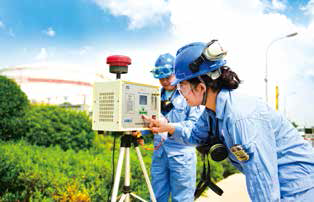
Climate Change Mitigation
The Company continued to strengthen greenhouse gas emissions management. The Administrative Measures for Sinopec’s Carbon Emissions were revised to further standardize the management and control of greenhouse gas emissions. Carbon accounting and verification were carried out to lay a solid data foundation for emission reduction. The Company strengthened the assessment of greenhouse gas emission reduction, and reinforced the management of greenhouse gas emissions throughout the system. The Company carried out special surveys on methane leakage and venting, sorted out the main sources of methane emissions in oil and gas production, and determined monitoring technologies and methods. Focuses were put on promoting the carbon footprint accounting and evaluation of petrochemical products, so as to build a green enterprise.
The Company took greenhouse gas emission reduction actions. The oilfield subsidiaries promoted the oil displacement by carbon dioxide demonstration projects, injecting 230,000 tonnes of carbon dioxide, and increasing oil production by 70,000 tonnes. Refining and chemical subsidiaries recycled and reused a total of 1.26 million tonnes of carbon dioxide throughout the year. Methane gas was further recovered and reused. Oilfield subsidiaries recovered about 400 million cubic meters of methane, correspondingly reducing greenhouse gas emissions by about 6 million tonnes of carbon dioxide equivalent. Refining and chemical subsidiaries recycled 11.4 million cubic meters of biogas throughout the year to reduce greenhouse gas emissions.
The Company participated in national carbon market construction and pilot regional carbon trading. The Company organized carbon emission rights registration, trading system account application and trial quota calculation nationwide. Twenty-six pilot carbon trading companies have formulated reasonable compliance plans and trading plans, and met the annual carbon quota on schedule. The annual carbon trading amount was 2.69 million tonnes and the trading value was 64.93 million yuan.
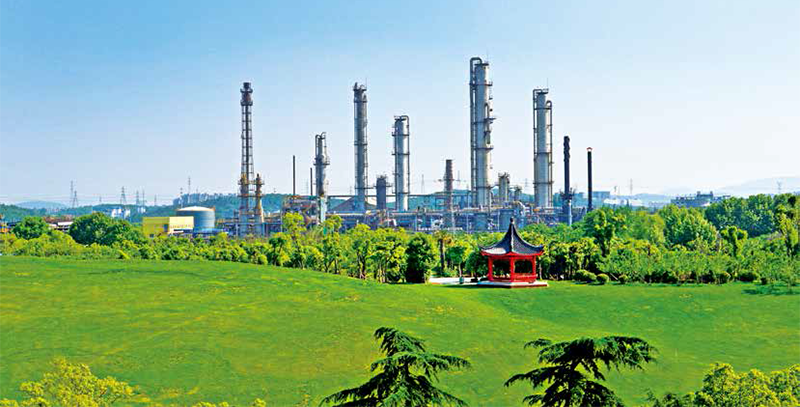
Afforestation Management
The Company enhanced afforestation management system and mechanism. We formulated and issued Sinopec Afforestation Management Regulations which clarify work responsibilities, standardize construction processes and use of funds, and strengthen the protection and management of afforestation achievements.
The Company organized voluntary tree planting for all. The Company participated in such actions as the Yangtze River Protection, Desert Greening, and Ant Forest, and planted 1.46 million trees. The “Internet + Voluntary Tree Planting for All” pilot activity was held, through which more than 10,000 employees participated in online donation for tree planting.
The construction of Sinopec Exhibition Park was further proceeded. The Company completed the landscape design of Sinopec Exhibition Park, which passed the review by the National Afforestation and Greening Committee. The construction of Sinopec Exhibition Park began in September 2019 and it is expected to open in August 2020.
Green Energy
Geothermal energy development and utilization were advanced in an orderly manner. In terms of resource exploration, 22 exploratory wells were drilled, and the success rate of water testing was 82%. In terms of market development, the Company actively expanded high-quality markets such as “2 + 26” in the north, 11 cities in the Fenwei Plain, and cities in the south where it is cold in winter and hot in summer. In terms of promoting the construction of the Xiong'an New Area, special research on geothermal utilization planning and geothermal resource evaluation work were carried out. In terms of scientific research on hot dry rocks, the Company carried out scientific research on hot dry rocks in the Qinghai Gonghe Basin. In September, many phased tasks were successfully completed, including the overhaul, high-temperature logging, secondary completion, and experimental fracturing of hot dry rock GR1 in the Qinghai Gonghe Basin. The geothermal heating capacity was increased by nearly 8 million m2 throughout the year, with a cumulative heating capacity of 52 million m2 and an achieved heating area of 44 million m2.
Solar power generation, waste heat utilization and biomass energy business grew steadily. The Company actively expanded distributed photovoltaic power generation projects in Hainan, Shanxi, Shanghai and other places, adding 8 MW of photovoltaic power generation capacity, generating 86.5 million kWh of electricity throughout the year. The Company actively promoted residue heat utilization projects, adding 24 MW of power generation capacity. Waste heat provided 20 million Gj/year of heat and installed power generation capacity reached 430 GWper year. The sales volume of ethanol gasoline reached 12.65 million tonnes per year (among which the amount of ethanol was 1.27 million tonnes per year), and the sales volume of biodiesel reached 360,000 tonnes per year.
The Company took active responsive measures to the electric revolution in the automotive industry. A total of 114 charging piles were constructed, and the company steadily promoted the electrification of its own vehicles. R&D and production of lightweight automotive materials and power battery related materials were advanced.
The Company actively involved in the hydrogen energy utilization. A total of 4 oil-hydrogen combined stations were built in Guangdong, Shanghai, and Zhejiang, with a hydrogen refueling capacity of 3.3 tonnes per day. Sinopec signed a memorandum of cooperation with Air Liquide Group and became a shareholder of a domestically well-known hydrogen fuel cell vehicle system supplier, Re-Fire, to boost the development of hydrogen energy industry in China.
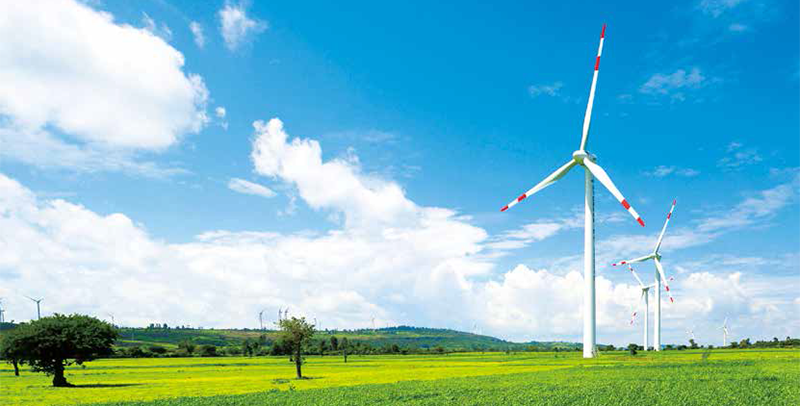

Contact Us
 Address
Address- 22 Chaoyangmen North Street, Chaoyang District, Beijing, China
 Post code
Post code- 100728
 Tel
Tel- 86(0)10 59960114
Legal Notice
This Website is constructed by China Petrochemical Corporation. (hereinafter referred to as SINOPEC). Please read carefully the following terms...
LEARN MORE 京公网安备11010502035639
京公网安备11010502035639 Technical support : Pcitc information technology Co., LTD.

